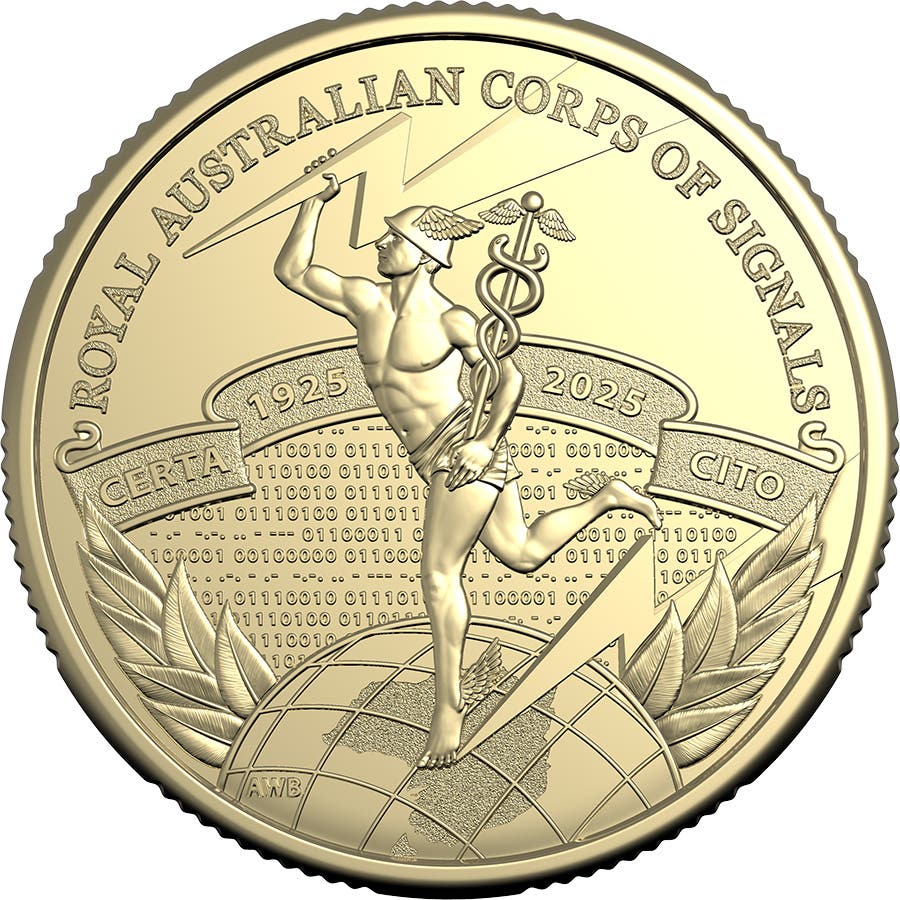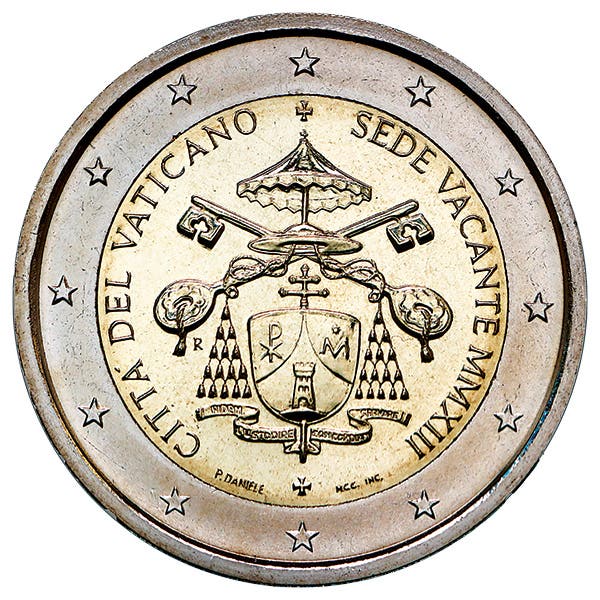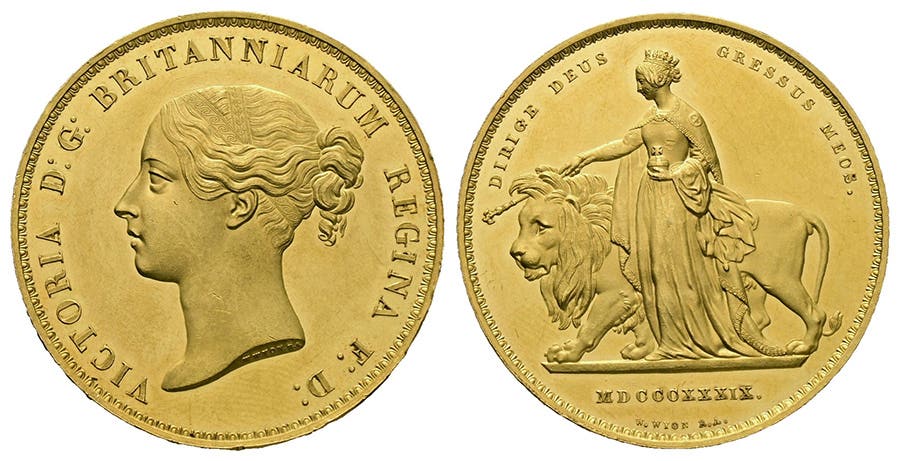COTY Winning Apollo 11 Coin Overcame Challenges
At the 15th annual Technical Forum held at the World Money Fair in 2019, Ronald E. Harrigal, Director of Design and Engraving at the United States Mint gave a presentation…
At the 15th annual Technical Forum held at the World Money Fair in 2019, Ronald E. Harrigal, Director of Design and Engraving at the United States Mint gave a presentation entitled 2019 Apollo Commemorative Coin Program Challenges and Results. At that time, Harrigal was a 33-year veteran of the United States Mint technical staff and acting as Senior Advisor on the Apollo coin project.
The United States Mint had produced curved coins in 2014 with the Baseball Hall of Fame series, which won two categories in the 2016 COTY Awards and then took the overall prize for top Coin of the Year. It was a technological advancement to strike curved coins in high volume and in various metals. With the Apollo coin program, the United States Mint went a step further, striking a 5 ounce silver example.
The five ounce silver Apollo 11 coins had a mintage limit of 100,000, with the final mintage figure ending just over 68,000. Harrigal’s presentation explained the numerous challenges they encountered producing a curved coin of that size.
Many interesting facts were revealed in Harrigal’s presentation. The silver blanks used for the 5 ounce Apollo II coin were the same ones used for the America the Beautiful series. The dies were individually machined and hand finished. A GMP 1000 coin press from GRÄBENER Minting was used for striking.
Most importantly, it was estimated that 400 pairs of dies would be required to strike the full mintage of 100,000 coins. This brought up some issues. Using a CNC mill to machine the dies was estimated to take 11.5 hours, plus another four hours to hand polish each die. The planned production window for the 5 ounce silver Apollo 11 coin was 90 days and two CNC mills were dedicated to the project.
If you do the math, you’ll soon see the problems. The decision to purchase four additional CNC mills was made, not only for the Apollo 11 program, but because the two older CNC mills were approaching their life expectancy. The new CNC mills were updated, higher speed and produced a superior finish. The two old CNC mills were kept in operation until the Apollo 11 program concluded. With these steps taken, tests were made to see what else could be done to reduce die production time.
With the new CNC mills and through testing and adjustments, the mint was able to reduce the machining time for dies from 11.5 to just 4.5 hours. It was discovered that the inner die, with the footprint, lasted much longer that the domed outer die. One reason may have been the amount of detail in the design which presents the full visor reflected image from the famous moon surface picture. This was a more detailed design than we had seen on the 2014 Baseball Hall of Fame one ounce silver coin.
Through examination of metal displacement and fill issues the mint staff was able to extend the life of each die. Because the concave footprint die was lasting approximately twice as long as the convex helmet reflection die the mint was able to reduce the number of dies which had to be made down to 65 and 125 respectively.
If you again do the math you’ll see that they were still outside their planned 90 day window of production time, but by assigning four employees to hand finish the dies, they finally got down to a reasonable production time. But one more wrench got tossed into the works when coin blank supply could not meet initial release demand. This was primarily due to each blank needing to be individually burnished to achieve the required surface finish. So many challenges, but the U.S. Mint staff handled each and every one in stride and produced a stunning coin for collectors.
The intricacies of the design also caused some problems with the one ounce silver coin. I recall being enthralled by the portion of Harrigal’s presentation centered on the coin’s legend and the extreme difficulties encountered in keeping it clean and clear through the outward metal flow, while maintaining enough pressure to form the blank to the concave shape and fully strike the coin without running through dies too quickly. All these challenges were met and all the coins in the series proved exceptionally popular. Some were even paired with commemorative Apollo 11 coins from other countries in joint marketing ventures enjoyed by many collectors world-wide.
When the COTY Nominating Committee began the process of selecting 100 coins, ten in each category, Apollo 11 Moon Landing coins of all sorts were proposed, including those of the United States Mint. The discussions focused on the momentous nature of the event, as well as creativity of the designs. Many Moon Landing coins made it into the final 100 Nominees, but only the 5 ounce silver Apollo II dollar from the United States Mint obtained nominations in two categories.
In the early days of the COTY Awards, double category nominations happened fairly often, but of late it has become pretty uncommon. The theory developed that when a coin is nominated in more than one category, they tend to end up dividing the judge’s attention, reducing the aggregate number of votes and failing to win either category. This particular coin overcame these perceived obstacles, which I think was in large part due to world-wide cognizance of the event itself.
The voting in the Best Contemporary Event category went heavily in favor of the Apollo 11 5 ounce silver Dollar. It got almost twice the number of votes as the next closest competitor. In the Best Silver Coin category, the voting was far more competitive and the Apollo 11 5 ounce silver dollar won by a modest margin.
As the final voting began for the overall top COTY coin that split voting theory came into play. Votes for each of the ten category winners were of course tallied individually. Both the Best Contemporary Event and Best Silver winners were the same exact coin and Judges voted for one or the other, splitting the 5 ounce silver Apollo 11 Moon Landing coins’ votes.
As final voting closed, the Best Contemporary Event winner took the overall COTY title by a fairly close margin. However, when looking at the votes for Best Silver coin it was clear that those two category winner votes combined equaled exactly double the next closest contestant. To me that constitutes an amazing endorsement of a beautiful coin.








